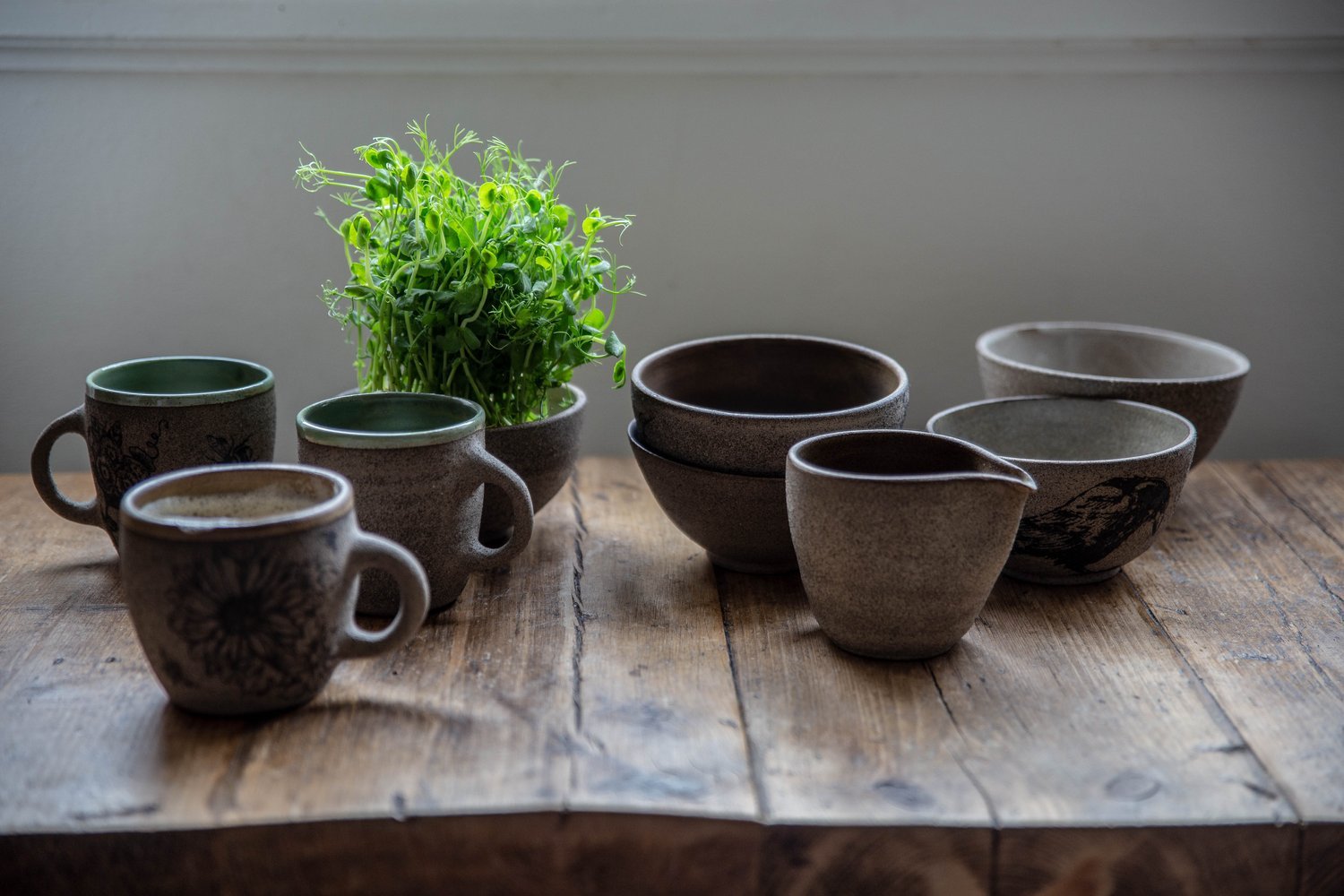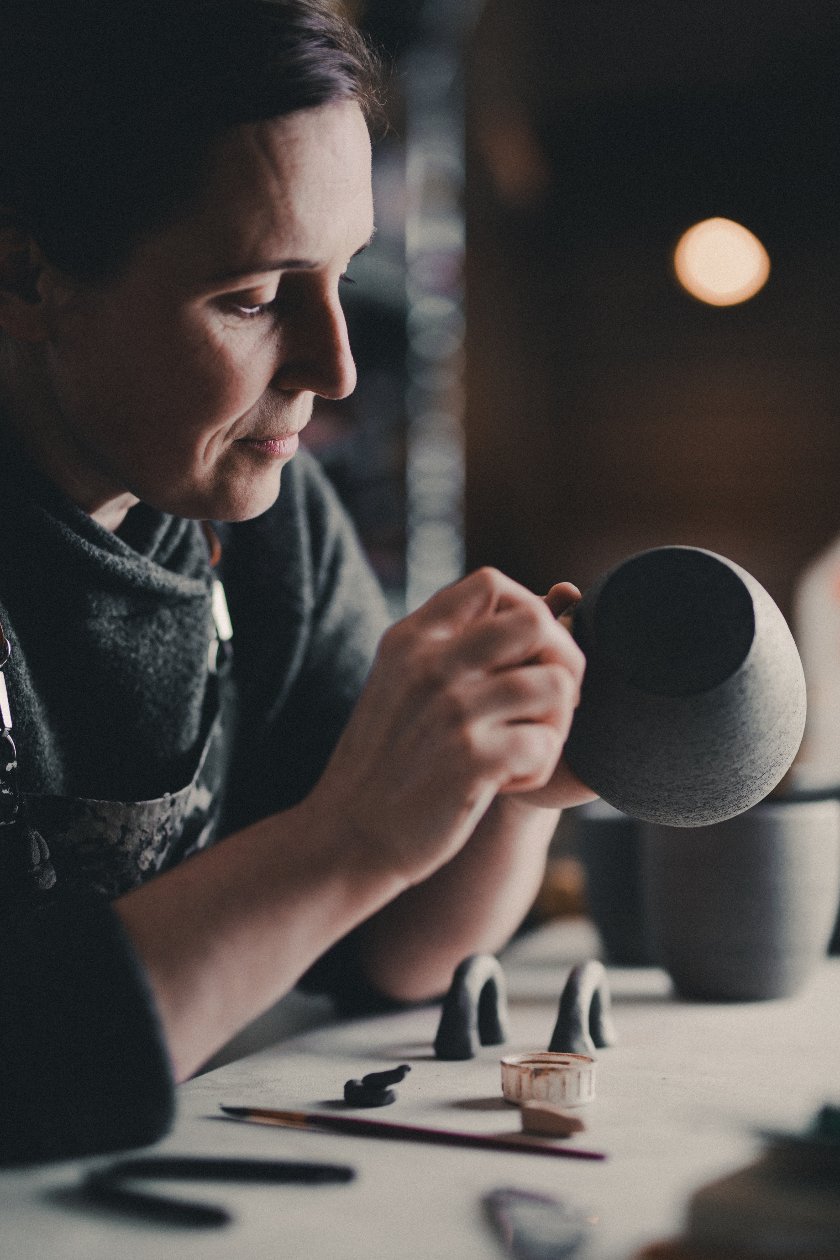
About
Mud Station is a community pottery based in the heart of Edinburgh. Originally set up as a personal studio in 2012, we have grown and developed to offer adult classes catering for all abilities ranging from complete beginners to more advanced makers. Our studio offers a range of equipment for both wheel throwing as well as hand building.
The Team
Sylwia
As a self-taught potter I learned by understanding my mistakes. I experimented with a lot of different pottery techniques, hand building, slip casting and throwing. I explored glazing and firing somewhat randomly due to the limitations of the old kiln I installed in my living room. I visited Michal Puszczynski in the summer of 2006 and saw his work fired in a wood fired kiln. I was immediately excited by and oriented towards this firing technique; this experience, firing pieces in a Tongkama kiln, remains a highlight in my life.
For me, the work becomes something that needs to be thought about, studied and understood. I find working with fire enthralling and know this is the way forward for me as a potter. Since then I have been striving to learn about and experience the wood firing process. I have built several Raku kilns, the most recent, built in an old oil drum, works quite well. My work is an area where I feel I encounter original, primordial, pristine matter, the elements of earth and water, fire and air, and the studio becomes an arena of alchemical transformation which I find endlessly inspiring.
Piotr
Bio coming soon.



